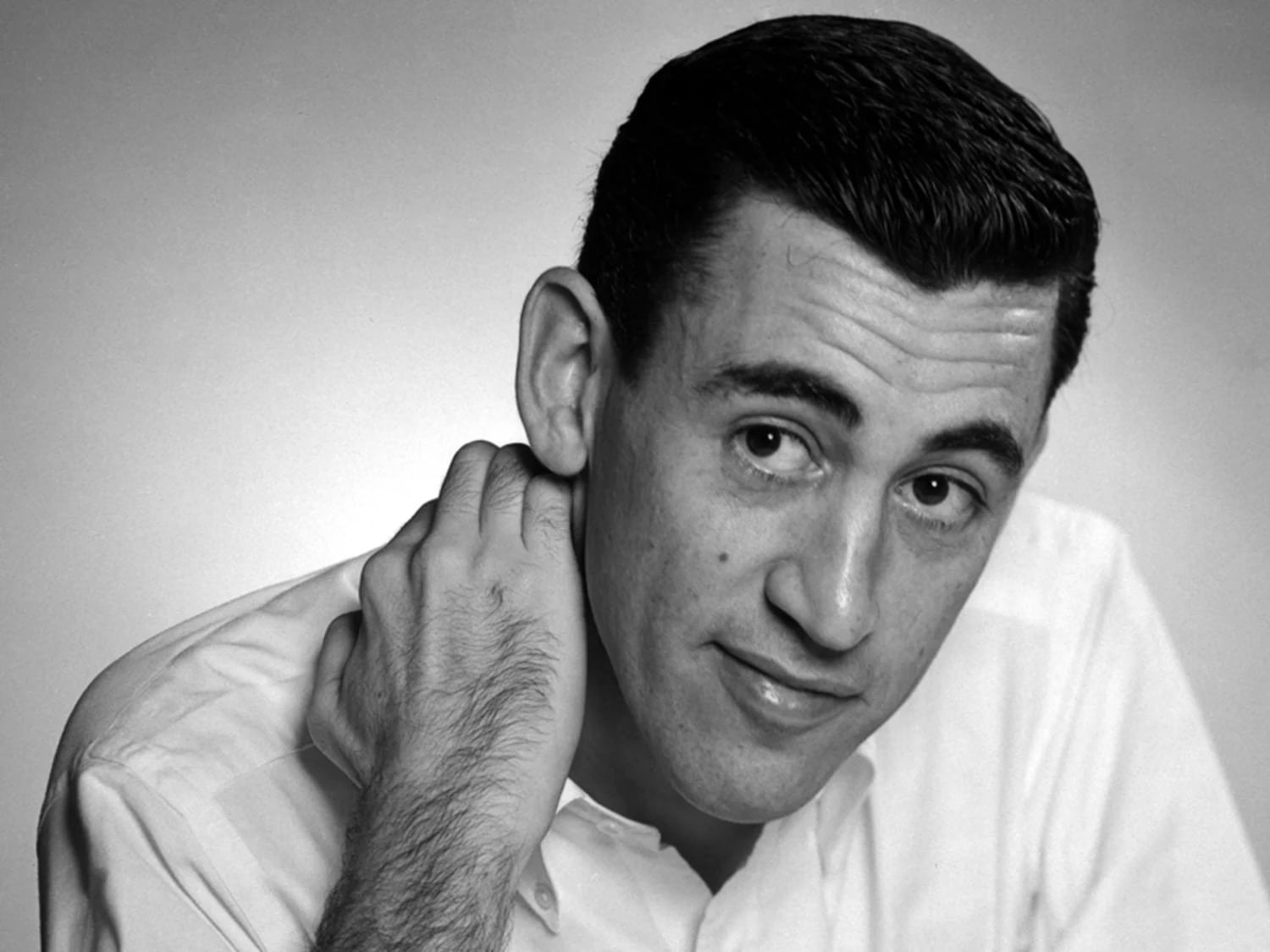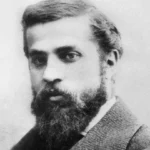
J.D. Salinger, born on January 1, 1919, in New York City, remains a literary enigma whose profound impact on the 20th-century literary landscape endures. Best known for his iconic novel, “The Catcher in the Rye,” Salinger’s life and work are marked by a captivating blend of literary brilliance and a fiercely guarded private persona. From his early days experimenting with pen names to the controversies surrounding his masterpiece, this intro offers a glimpse into the multifaceted life of a reclusive yet influential figure. Join us as we delve into the intriguing facets of J.D. Salinger’s journey, exploring the layers of his creativity, the mysteries of his personal life, and the lasting legacy he left in the world of literature.
Birth: J.D. Salinger, born on January 1, 1919, in New York City, USA, was raised in a Jewish family. His parents, Sol Salinger and Marie Jillich, provided a comfortable upbringing for him. Growing up amidst the vibrant culture of New York, Salinger’s early exposure to literature and diverse experiences would later shape his distinctive writing style.
Pen Name: In the early stages of his writing career, Salinger adopted the pseudonym “Kenneth Sarr” for some of his works published in magazines. This pen name reflected his experimentation and search for a unique voice. However, as his career progressed, he abandoned the alias, preferring to be recognized under his given name.
Education: Salinger’s educational journey was marked by attendance at various institutions such as McBurney School, Severn School, and Valley Forge Military Academy. His expulsion from Valley Forge for stealing a boat hinted at a rebellious streak. These experiences, although tumultuous, contributed to the complex characters and themes that would later emerge in his literary works.
College: After a brief stint at Columbia University, Salinger left academia to pursue a career in writing. His decision to forgo traditional education in favor of honing his craft independently underscored his commitment to the art of storytelling.
WWII Service: Drafted into the US Army in 1942 during World War II, Salinger served in Europe. The war profoundly impacted him, influencing the themes of trauma and existentialism that permeate his post-war works. His experiences in the military played a pivotal role in shaping the authenticity and depth of his later literary endeavors.
Marriage: Salinger’s first marriage to Sylvia Welter in 1945 was relatively short-lived, ending in divorce in 1951. Despite the marital challenges, this period marked the beginning of Salinger’s family life, foreshadowing the complex relationships explored in some of his later writings.
Children: The birth of Salinger’s daughter, Margaret, during his first marriage, added a familial dimension to his life. This early fatherhood experience likely contributed to his nuanced portrayal of familial relationships and parental dynamics in his literary works.
Second Marriage: In 1953, Salinger married Claire Douglas, and the couple had two children, Matthew and Jeanne. This second marriage provided a different chapter in Salinger’s personal life, and while the details of his private life remained guarded, it undoubtedly influenced his perspectives on love, commitment, and human connection.
“Catcher in the Rye” Publication: The release of “The Catcher in the Rye” in 1951 marked a turning point in Salinger’s career. The novel, capturing the disillusionment of post-war youth, resonated with readers and critics alike. Its success catapulted Salinger into literary stardom and laid the foundation for the enduring impact of his work.
Critical Acclaim: While “The Catcher in the Rye” received widespread praise for its authentic portrayal of teenage angst and alienation, it also faced criticism for its controversial themes and language. This duality in reception underscored Salinger’s ability to evoke strong emotions and initiate profound reflections on the human condition, establishing him as a polarizing figure in the literary landscape.
Reclusive Lifestyle: Following the unprecedented success of “Catcher in the Rye,” Salinger adopted a reclusive lifestyle. He withdrew from public life, avoiding interviews and public appearances. This deliberate retreat sparked intrigue and speculation about his motives, contributing to the enigmatic aura surrounding the author. Salinger’s reclusiveness became a defining aspect of his legacy, overshadowing even the literary impact of his works.
Censorship Controversy: “Catcher in the Rye” faced frequent challenges and bans in schools and libraries due to its controversial content, including its depiction of teenage rebellion and strong language. This censorship controversy added another layer to Salinger’s legacy, illustrating the societal debates and challenges faced by authors pushing the boundaries of conventional norms.
Later Works: While “Catcher in the Rye” achieved iconic status, Salinger’s subsequent publications, including short stories and novellas, did not reach the same level of fame. These works, often exploring similar themes of isolation and existentialism, provided glimpses into the author’s evolving perspectives but did not replicate the groundbreaking success of his debut novel.
Legal Battles: Fiercely protective of his privacy, Salinger engaged in multiple legal battles to prevent unauthorized publications of his works or personal information. These legal disputes showcased his unwavering commitment to maintaining control over his artistic legacy and private life, further solidifying his reputation as a fiercely private individual.
Death: J.D. Salinger passed away on January 27, 2010, at his home in Cornish, New Hampshire, at the age of 91. His death marked the end of an era, prompting reflection on his impact on literature and culture. The timing of his passing and the subsequent revelations about unpublished works heightened interest in his life and contributed to a renewed exploration of his contributions to the literary world.
Posthumous Publications: Since Salinger’s death, several previously unpublished works, including three novels, have been released. These posthumous publications provided readers with additional insights into Salinger’s creative process and expanded the body of his work. The discovery of unseen material reignited discussions about his influence and the depth of his artistic contributions.
Sales Figures: “Catcher in the Rye” has maintained its status as one of the best-selling novels of all time, with estimates suggesting over 65 million copies sold worldwide. This enduring popularity underscores the timeless relevance of Salinger’s exploration of adolescent struggles and societal critiques, making the novel a perennial favorite for readers across generations.
Literary Influence: Salinger’s writing style and thematic exploration of existentialism, alienation, and the human experience have significantly influenced countless authors. His impact on literature extends beyond his own generation, with contemporary writers drawing inspiration from his unique narrative voice and ability to capture the complexities of the human psyche.
Cultural Impact: “Catcher in the Rye” transcended its status as a literary work to become a cultural touchstone. Its influence is evident in numerous adaptations, references, and homages across various media. The novel’s enduring presence in popular culture highlights its resonance and relevance, solidifying Salinger’s status as a cultural icon.
Legacy: Despite his reclusive nature, J.D. Salinger remains one of the most influential and enigmatic literary figures of the 20th century. His legacy extends beyond his written works, encompassing the cultural impact of “Catcher in the Rye,” the controversies surrounding his private life, and the ongoing exploration of his posthumously released material. Salinger’s imprint on literature and popular culture continues to shape discussions about the intersection of art, privacy, and the enduring power of storytelling.
Height: Although J.D. Salinger’s height is not officially documented, photographic evidence suggests he was likely around 5 feet 8 inches tall. While seemingly mundane, such personal details contribute to the overall fascination with the author, as fans and biographers seek to understand every facet of the elusive figure behind the literary masterpieces.
Weight: Similar to his height, Salinger’s weight remains undisclosed in public records. The scarcity of such personal information reflects his commitment to guarding his privacy, reinforcing the notion that Salinger was not only protective of his literary works but also of the details of his personal life.
Number of Published Novels: Despite his prolific talent, J.D. Salinger published only one novel during his lifetime – the iconic “The Catcher in the Rye.” This singular focus on quality over quantity contributes to the mystique surrounding Salinger, as fans and scholars continue to analyze the profound impact of his limited yet impactful body of work.
Number of Published Short Stories: Alongside his novel, Salinger’s literary contributions include approximately 20 published short stories. Initially featured in various magazines before being compiled in collections, these stories showcase his versatility in exploring diverse themes and characters, each offering a glimpse into Salinger’s nuanced understanding of the human condition.
Time in the Army: Serving in the U.S. Army for approximately three years during World War II, Salinger’s military service profoundly influenced his perspective on life and informed the thematic elements of his later works. The hardships, camaraderie, and trauma experienced during this period became integral components of his storytelling, demonstrating the real-world impact that shaped Salinger’s literary legacy.
Frequently asked questions:
Why is Catcher in the Rye controversial?
Why “Catcher in the Rye” is Controversial:
Profanity and Sexual Content: The novel uses profanity and alludes to some mature themes, which have made some parents and educators uncomfortable with its inclusion in school curriculums.
Rebellious Protagonist: The main character, Holden Caulfield, exhibits rebellious and cynical behavior, which may be seen as problematic or discouraging to some readers.
Mental Health Representation: While not explicitly stated, some interpret Holden’s behavior as reflecting mental health struggles, which could trigger certain readers and raise concerns about how it’s represented.
Why did Salinger stop writing?
Why Salinger Stopped Writing:
Desire for Privacy: Salinger was known for his reclusiveness and preference for staying out of the public eye. He may have felt overwhelmed by the fame and scrutiny following the success of “Catcher in the Rye” and wished to protect his privacy by limiting further publications.
Perfectionism and Writer’s Block: Some speculate that Salinger struggled with perfectionism and writer’s block, finding it challenging to produce work that met his own high standards after the immense success of his first novel.
Why is Salinger so popular?
Why Salinger is Popular:
Resonance with Teenage Angst: “Catcher in the Rye” authentically captures the feelings of alienation, disillusionment, and the search for identity that many teenagers experience, making it relatable and impactful for generations of readers.
Unique Writing Style: Salinger’s first-person narrative and colloquial language create a strong sense of intimacy and connection with the protagonist, drawing readers into Holden’s complex inner world.
Enduring Mystery and Legacy: Salinger’s reclusive nature and limited publications fueled curiosity and speculation, adding to the mystique surrounding him and his work.
Why is Catcher in the Rye so important?
Why “Catcher in the Rye” is Important:
Literary Significance: The novel is considered a landmark work of American literature, breaking new ground in its portrayal of teenage angst and influencing countless writers who followed.
Cultural Impact: The novel has had a profound cultural impact, sparking discussions about mental health, societal expectations, and the struggles of adolescence.
Timeless Themes: The themes of alienation, loss of innocence, and the search for meaning remain relevant and continue to resonate with readers of all ages.
While “Catcher in the Rye” remains a controversial book, its undeniable impact on literature and culture, coupled with its ability to connect with readers on a personal level, solidify its significance and Salinger’s enduring place in literary history.








